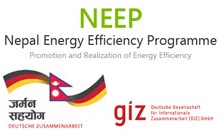Since furnaces operate in high temperature domains; the stack temperatures are very high, and waste heat recovery is a major energy efficiency opportunity in furnaces. The recovered waste heat is conventionally used for either pre-heating of combustion air or to heat the material itself.
Some common waste heat systems are listed below.
Simple double pipe type heat exchanger
These generally take the form of concentric cylinders, in which the combustion air passes through the annulus and the exhaust gases from the furnace pass through the center. Such recuperators are very cheap to make, are suitable for use with dirty gases, have a negligible resistance to flow, and can replace the flue or chimney if space is limited.
Convection recuperators
Convection recuperators consist essentially of bundles of drawn or cast tubes. Internal and/or external fins can be added to assist with heat transfer. The combustion air normally passes through the tubes and the exhaust gases outside the tubes, but there are some applications where this is reversed. For example, with dirty gases, it is easier to keep the tubes clean if the air flows on the outside. Design variations include ‘U’ tube and double pass systems. Convection recuperators are more suitable for exhaust gas temperatures of less than about 900°C. Beyond 900ºC, ceramic recuperators can be used which can withstand higher temperatures.
Regenerative burners
Convection recuperators consist essentially of bundles of drawn or cast tubes. Internal and/or external fins can be added to assist with heat transfer. The combustion air normally passes through the tubes and the exhaust gases outside the tubes, but there are some applications where this is reversed. For example, with dirty gases, it is easier to keep the tubes clean if the air flows on the outside. Design variations include ‘U’ tube and double pass systems. Convection recuperators are more suitable for exhaust gas temperatures of less than about 900°C. Beyond 900ºC, ceramic recuperators can be used which can withstand higher temperatures.
Payback of energy saving options
Experience from the past has shown that implementing energy saving options in waste heat recovery is highly profitable with payback of investment of less than 3 years.
Table 1: Payback of investment of energy saving options for waste heat recovery
| Options | Estimated payback period |
|---|---|
| Optimize excess air levels | < 1 year |
| Control leakages of air/flue gas | < 1 year |
| Install properly sized waste heat recovery units in furnaces/boilers/heaters | 1-2 years |
| Clean the heat transfer areas frequently | < 1 year |
| Adopt on-line cleaning system | 1-2 years |



